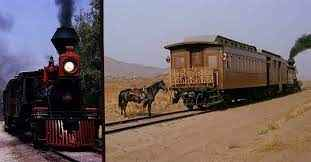My Own Batteries Not Included Rules/Generator
I've been playing games of Batteries not Included at home. Here's my module generator for the game:
This game centers around capturing a neutral flag. Players consist of a core, and can attach five Modules to that core.
The core is indestructible; the Modules are not.
Four types of resources/accruable stats:
Power - Resets at the start of each round, used for certain actions
Some objects allow you to gain more power per turn.
Ammo - Used for advanced weapons, bullets and bombs are all just Ammo. If something requires ammo, it starts out with 2 units of Ammo
Fuel - Used to power certain modules, diesel and biofuel are all just Fuel. If something requires Fuel, it starts out with 2 units of Fuel.
Heat - Accrued from Overclocking (see below) and certain actions, too much of this is bad.
Your core can store one Heat. Afterwards, it’s stored in the Module that generated it.
When you have 1 Heat stored in a module, that module can’t be untapped. When you have 2 Heat stored in a module, that module is on fire and takes 1 damage per turn. When you have 3 Heat, that module explodes (is destroyed), and your other modules gain 1 Heat.
You can choose to spend a turn Venting heat. This means you cannot use any of your modules this turn. If you don’t gain any Heat this turn, you lose all of your Heat at the start of your next turn.
Cards have five other terms, which make up the bread and butter of the game:
Tap - Turning a card from upright to horizontal, often part of a module action. You can’t tap a tapped card, which is why this is important. Each turn, you may untap one card.
Damage - Used for destroying foes and stealing their limbs
When a module takes 1 damage, it is tapped. When it takes 2, it is damaged (upside down). When it takes 3, it is either destroyed or detached (50/50 chance).
Power Regen - This much Power is gained at the start of each turn
Heat Capacity - Heat is safely stored in these with no other effect
Synergy: doubling up on an action triples its effect. Using 2 wheels to move allows you triple the effectiveness; two claws to grab is three times as secure.
Four types of Modules (for organization purposes):
Locomotion - Wheels, legs, rotors. They let you move. They will tell you how far.
Manipulation - Claws, arms, electromagnets. They have a range.
Enemies that are grabbed can be thrown a certain distance too.
Grabbed enemies are automatically hit by melee attacks.
Weaponry - Everything from nailguns to laser swords. They have a range.
Melee weapons can be used on anyone within range; ranged weapons have to be used on enemies in line of sight.
Utility - Power-supply, heat management, comms, sensors, miscellaneous benefits.
Some will require an action to use.
Before the Game
Deal each player 10 Modules. They choose five of them to attach to their Core. They may:
choose to mulligan all of their cards and draw 9 new Modules;
choose to return 3 cards to the deck and draw one of a chosen type (L/M/W/U)
or they may pick 4 cards they want, discard the rest, and draw the first card from the deck that has
one of the following symbols of their choice: P, T, A, D, Fuel, H. This does not include [H] or [P].
Rounds
The game operates in rounds. At the start of each round, each player rolls two dice, rerolling between tied players.
Players proceed in each step from highest die roll to lowest. Each round goes as follows:
Recharge Power
Untap one module (that isn’t damaged, on fire, etc.).
Ranged attacks
Movement
Other actions. If you have done no actions and gained no Heat, you may Vent on this step.
Ongoing damage (fire, crushing, acid etc.)
Items
Items are either common or rare. That means there’s either two of them or one of them per deck.
Aside from their effects, Locomotion Items determine how you can attack and how you interact with grabs.
Robots without legs can attack enemies within 360 degrees; robots with legs can only attack enemies in their Line of Sight.
Characters with Legs may tap their Legs to become upright after failing a Balance roll (see Grabs and Throws).
Other robots cannot take actions until they become upright by spending a turn without taking actions.
Attacks:
When you attack with a weapon, roll a die. With a melee weapon, you hit on a 3+.
With a ranged weapon, you hit on a 4+. Some items modify this.
Players can Overclock to take an action out of order, gaining 1 Heat if it succeeds.
Grabs/Throws
When you grab an enemy, roll a die. On a 3+ (this is the Grab Threshold), you successfully grab them by a random module
(roll 1-6 to determine which if they have all of their modules equipped).
The Escape Threshold is a 5+. They may attempt to escape during the Other Actions step of the round.
You can grab scrap around the map and other stationary nonresisting targets for free.
You can throw things you have grabbed the turn after you grab them.
They move 6in in a direction of your choice and are no longer grabbed.
If they hit an object they take D to a module of their choice. In any case, they must roll a die:
on a 3+ (the Balance Threshold), they stay upright, but if they fail, they cannot move until they spend an action to become upright.
Niche Rules:
- Water spray taps a module if its damaged once, and damages it again if it's damaged twice, destroying it.
- Oil spray makes a module gain an additional heat the next time it gains heat.

Comments
Post a Comment